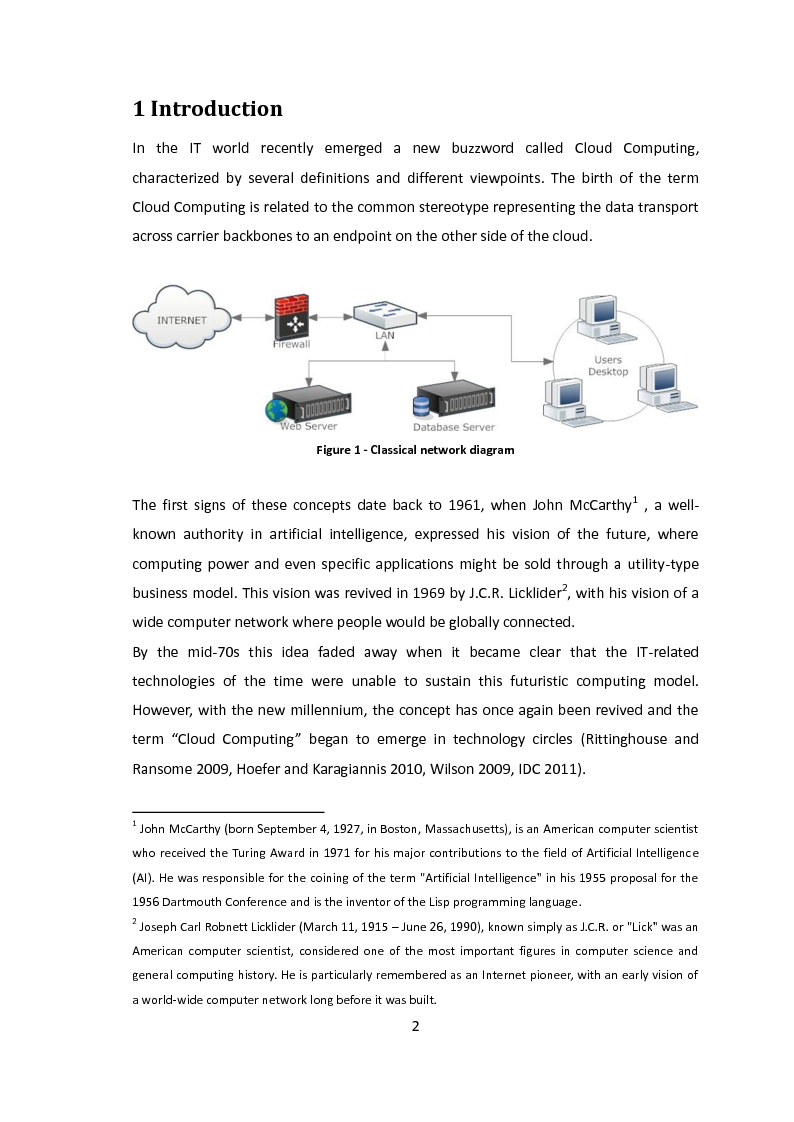Cloud Computing and Service Level Management: an investigation on the state of art
Cloud Computing (CC) is emerging as a new technological buzzword that proposes itself as an paradigm shift where IT is changing from a purchased product, that implies an investment, to a service over the Internet that is pay-per-use. Furthermore, Cloud Computing can offer better performances through an improved utilization of virtually unlimited resources. Although CC is at its early stage, most enterprises are beginning to adopt it. In this context Service Level Agreements (SLA) between customers and providers emerge as an issue, because, due to the dynamic characteristics of CC, a new, powerful Service Level Management (SLM) is necessary. Furthermore, the necessity to monitor real-time performance and the huge amount of variables involved makes this task really complex. This research intends to provide an accurate snapshot of the state of the art of CC, from an academic point of view, by a Systematic Literature Review (SLR), and, also, from a corporate point of view, by a worldwide survey. Afterwards, we consider the current frameworks for Service Level Management, and we address their effectiveness in cloud environments. As a result of this analysis we propose some best practices that extend the functionality of ESLAM (Extended Service Level Management Analysis Method), a framework for the quality of service management developed in the Services Engineering Laboratory, that met interest from the scientific community.
Finally, the research presents a test on a private cloud platform stating the management issues and highlighting the limits that service providers and load balancers have in the assurance of quality of service.
CONSULTA INTEGRALMENTE QUESTA TESI
La consultazione è esclusivamente in formato digitale .PDF
Acquista

CONSULTA INTEGRALMENTE QUESTA TESI
La consultazione è esclusivamente in formato digitale .PDF
Acquista
Informazioni tesi
| Autore: | Nicola Sfondrini |
| Tipo: | Laurea II ciclo (magistrale o specialistica) |
| Anno: | 2010-11 |
| Università: | Università degli Studi di Pavia |
| Facoltà: | Ingegneria |
| Corso: | Ingegneria informatica |
| Lingua: | Inglese |
| Num. pagine: | 200 |
Forse potrebbe interessarti la tesi:
L'avvento del cloud computing. Applicazioni web che facilitano la collaborazione famigliare
FAQ
Come consultare una tesi
Il pagamento può essere effettuato tramite carta di credito/carta prepagata, PayPal, bonifico bancario.
Confermato il pagamento si potrà consultare i file esclusivamente in formato .PDF accedendo alla propria Home Personale. Si potrà quindi procedere a salvare o stampare il file.
Maggiori informazioni
Perché consultare una tesi?
- perché affronta un singolo argomento in modo sintetico e specifico come altri testi non fanno;
- perché è un lavoro originale che si basa su una ricerca bibliografica accurata;
- perché, a differenza di altri materiali che puoi reperire online, una tesi di laurea è stata verificata da un docente universitario e dalla commissione in sede d'esame. La nostra redazione inoltre controlla prima della pubblicazione la completezza dei materiali e, dal 2009, anche l'originalità della tesi attraverso il software antiplagio Compilatio.net.
Clausole di consultazione
- L'utilizzo della consultazione integrale della tesi da parte dell'Utente che ne acquista il diritto è da considerarsi esclusivamente privato.
- Nel caso in cui l’utente che consulta la tesi volesse citarne alcune parti, dovrà inserire correttamente la fonte, come si cita un qualsiasi altro testo di riferimento bibliografico.
- L'Utente è l'unico ed esclusivo responsabile del materiale di cui acquista il diritto alla consultazione. Si impegna a non divulgare a mezzo stampa, editoria in genere, televisione, radio, Internet e/o qualsiasi altro mezzo divulgativo esistente o che venisse inventato, il contenuto della tesi che consulta o stralci della medesima. Verrà perseguito legalmente nel caso di riproduzione totale e/o parziale su qualsiasi mezzo e/o su qualsiasi supporto, nel caso di divulgazione nonché nel caso di ricavo economico derivante dallo sfruttamento del diritto acquisito.
Vuoi tradurre questa tesi?
Per raggiungerlo, è fondamentale superare la barriera rappresentata dalla lingua. Ecco perché cerchiamo persone disponibili ad effettuare la traduzione delle tesi pubblicate nel nostro sito.
Per tradurre questa tesi clicca qui »
Scopri come funziona »
DUBBI? Contattaci
Contatta la redazione a
[email protected]
Parole chiave
Tesi correlate
Non hai trovato quello che cercavi?
Abbiamo più di 45.000 Tesi di Laurea: cerca nel nostro database
Oppure consulta la sezione dedicata ad appunti universitari selezionati e pubblicati dalla nostra redazione
Ottimizza la tua ricerca:
- individua con precisione le parole chiave specifiche della tua ricerca
- elimina i termini non significativi (aggettivi, articoli, avverbi...)
- se non hai risultati amplia la ricerca con termini via via più generici (ad esempio da "anziano oncologico" a "paziente oncologico")
- utilizza la ricerca avanzata
- utilizza gli operatori booleani (and, or, "")
Idee per la tesi?
Scopri le migliori tesi scelte da noi sugli argomenti recenti
Come si scrive una tesi di laurea?
A quale cattedra chiedere la tesi? Quale sarà il docente più disponibile? Quale l'argomento più interessante per me? ...e quale quello più interessante per il mondo del lavoro?
Scarica gratuitamente la nostra guida "Come si scrive una tesi di laurea" e iscriviti alla newsletter per ricevere consigli e materiale utile.
La tesi l'ho già scritta,
ora cosa ne faccio?
La tua tesi ti ha aiutato ad ottenere quel sudato titolo di studio, ma può darti molto di più: ti differenzia dai tuoi colleghi universitari, mostra i tuoi interessi ed è un lavoro di ricerca unico, che può essere utile anche ad altri.
Il nostro consiglio è di non sprecare tutto questo lavoro:
È ora di pubblicare la tesi